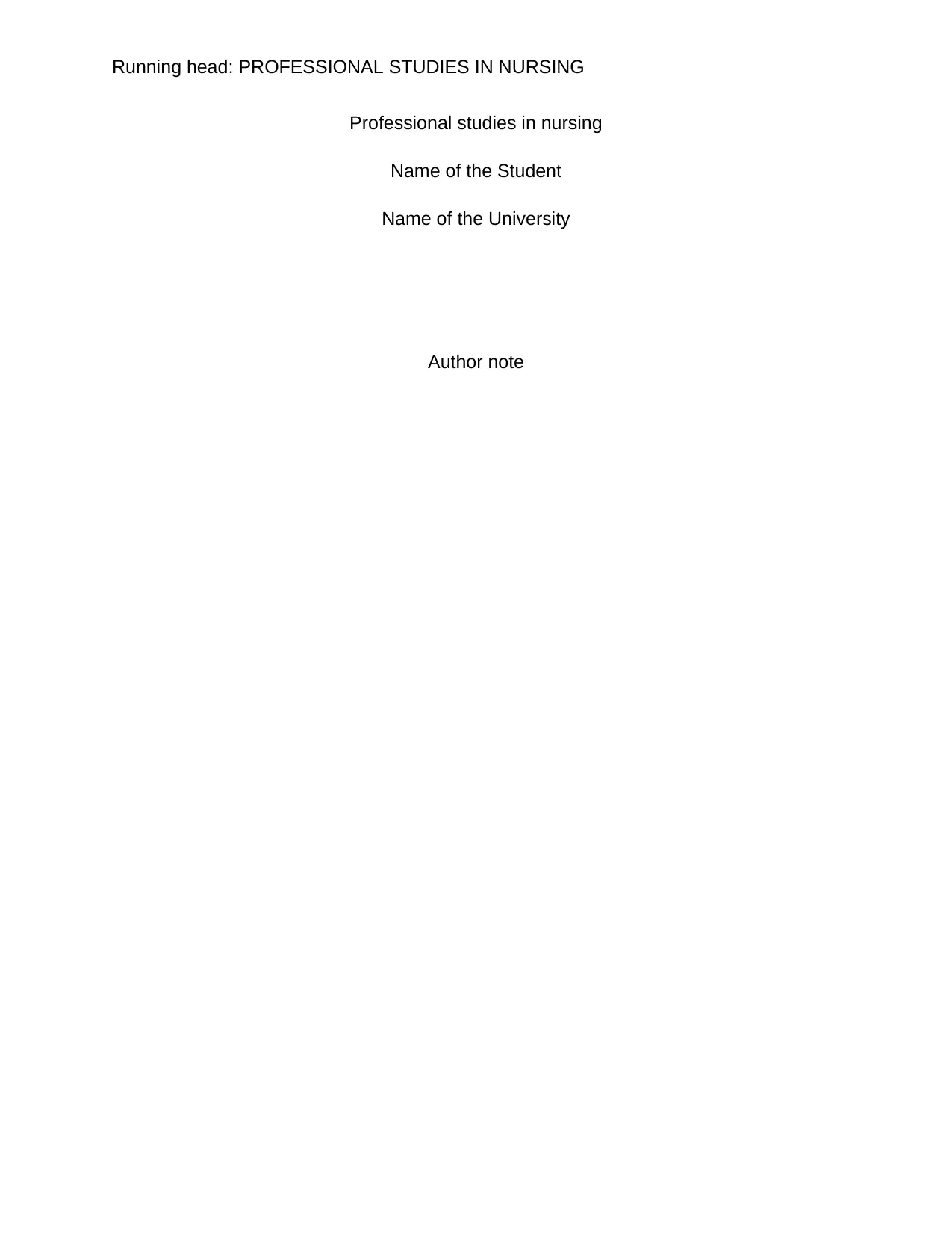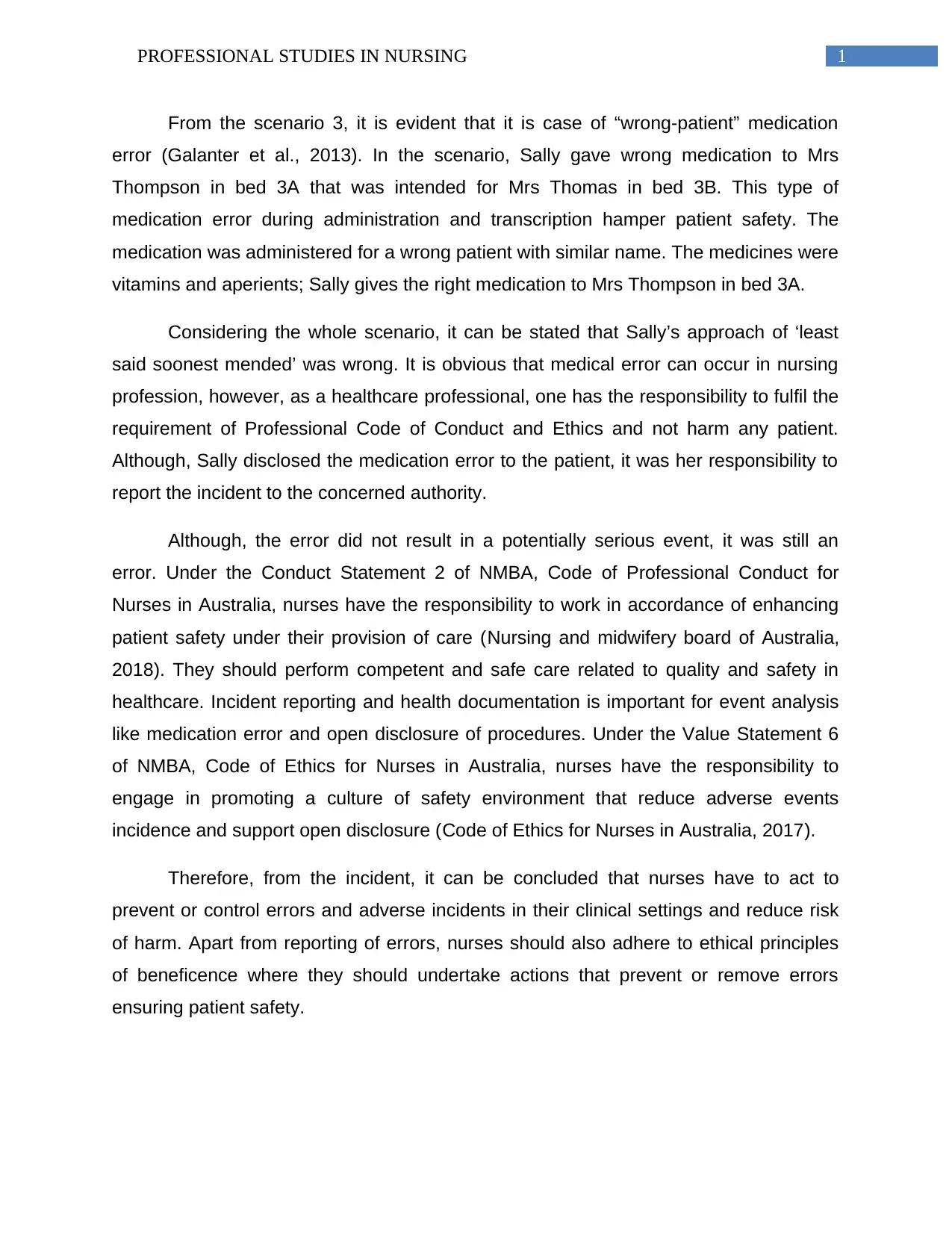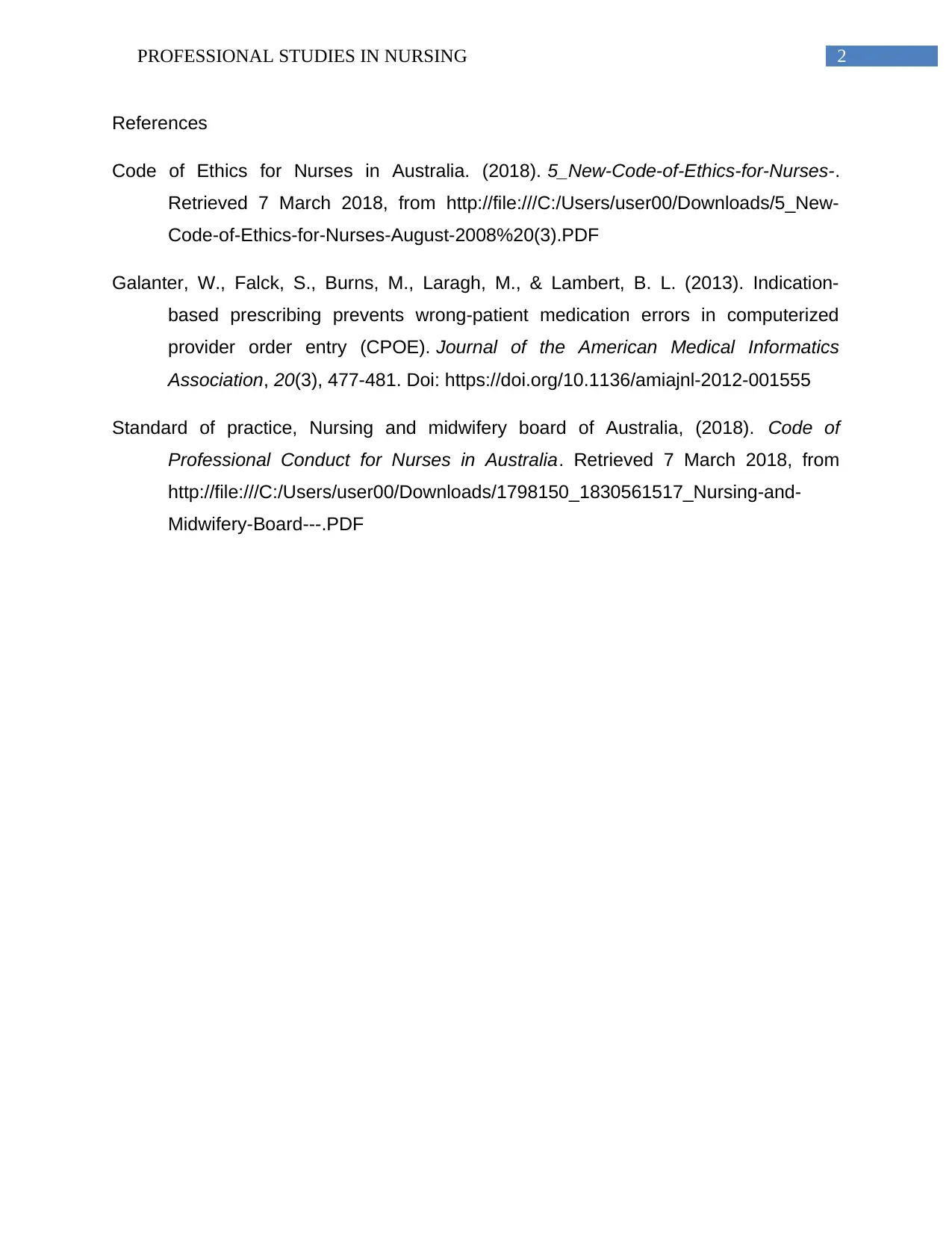Professional Studies in Nursing: Case Study of Medication Error
VerifiedAdded on 2021/04/21
|3
|551
|35
Case Study
AI Summary
This case study focuses on a medication error scenario in a nursing context, specifically a 'wrong-patient' medication error. The analysis examines the actions of a nurse, Sally, who administered medication to the wrong patient, Mrs. Thompson instead of Mrs. Thomas. The assignment explores the ethical and professional responsibilities of nurses, referencing the Code of Professional Conduct for Nurses in Australia and the Code of Ethics for Nurses in Australia. It highlights the importance of incident reporting, patient safety, and adherence to nursing standards. The analysis emphasizes the need for nurses to prevent errors, promote a culture of safety, and act in accordance with ethical principles like beneficence. The provided references include relevant publications and guidelines from the Nursing and Midwifery Board of Australia.
1 out of 3





![NURS6120: NMBA v Jones [2017] Case Study - Nursing Accountability](/_next/image/?url=https%3A%2F%2Fdesklib.com%2Fmedia%2Fnursing-midwifery-board-jones-2017_page_2.jpg&w=256&q=75)




![[object Object]](/_next/static/media/star-bottom.7253800d.svg)